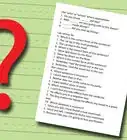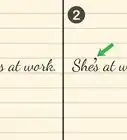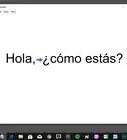wikiHow is a “wiki,” similar to Wikipedia, which means that many of our articles are co-written by multiple authors. To create this article, 46 people, some anonymous, worked to edit and improve it over time.
This article has been viewed 429,075 times.
Learn more...
Comma rules are the subject of much confusion and even heated debate (such as whether or not to use the Oxford comma). Learning how to use commas correctly will make your writing clearer, easier to read, and more professional-looking. Make your message unmistakable and correct with the proper use of commas!
Steps
Busting Some Basic Comma Myths
-
1Do not use a comma just because your sentence is long. This is a common mistake; sometimes, people will see a long sentence and put in commas to “break it up” even if the sentence is grammatical without them. The length of your sentence has nothing to do with whether or not it needs commas.[1]
- If necessary, separate long sentences into two or more smaller sentences.
-
2Avoid using commas to signify pauses. Some writers believe that a pause or breath indicates where a comma should be placed. However, because people read and speak differently, this method is unreliable and often results in mistakes.
- This technique may be acceptable to signal pauses when writing dialogue in fiction.
Advertisement -
3Do not always use a comma with a person’s name. This is another common comma error, but don’t be fooled: you only need to use a comma with the person’s name if the phrase serves as a non-restrictive modifier.
- For example, this is a common but incorrect comma usage: “Abraham Lincoln, was the 16th President of the United States.” Abraham Lincoln is the subject of that sentence and is an essential element.
- An example of correct comma usage with a name would look like this: “Abraham Lincoln, the 16th president of the United States, was a lawyer before he became president.” In this case, the 16th president of the United States is a non-restrictive clause (meaning the sentence makes sense if it’s removed) and is set off with commas on both sides.
-
4Understand that commas are complex but manageable. Another very common comma myth is that commas are a kind of grammatical magic that is impossible to accurately predict or learn. While the logic governing comma usage can seem complicated, most of the time, it’s actually easy to learn where they go if you know a few rules.[2]
Using Commas with Non-Restrictive and Restrictive Modifiers
-
1Understand what a relative clause is. A relative clause is a word, clause, or phrase that modifies some element of the main clause. Relative clauses are introduced by relative pronouns. Common relative pronouns include who/whom, whoever/whomever, whose, that, and which. In general, they come in two types: non-restrictive and restrictive.[3]
-
2Understand how non-restrictive modifiers work. Non-restrictive modifiers are relative clauses or phrases that add information to a sentence but aren’t essential to the meaning of the sentence. If you removed a non-restrictive modifier from the sentence, it would still make sense (and the main subject of the sentence would still be in place). They are also sometimes called “interrupters.”
- Here is an example of a non-restrictive modifier in a sentence: “George Washington, our first president, served two terms.” While the information in the non-restrictive modifier is helpful, the main clause makes sense if it’s removed: “George Washington served two terms.”
- Here is another example of a non-restrictive modifier: “Fatima, who has been studying hard, will probably do well on today’s exam.” The presence of who (a relative pronoun) in a clause is often a sign that it’s non-restrictive and should be set off by commas.
-
3Use commas with non-restrictive modifiers. In almost all cases, non-restrictive clauses or phrases will be set off on both sides by commas. This indicates to the reader that they’re additional information, but not necessarily essential. If you can remove the clause without damaging the sense of your sentence, it is almost certainly a non-restrictive modifier.
- Make sure to set off the entire modifier with commas, using one at each end. A common comma error is to set off the beginning of the modifier with a comma, but not the end.
- In almost all cases, relative clauses or phrases beginning with which will be non-restrictive modifiers and should be set off with commas: “The car accident, which occurred at 3 PM, didn’t damage my car too badly.”
-
4Use commas to offset expressions that interrupt the sentence. Sometimes, prepositional phrases and other phrases interrupt the main sentence, serving as non-restrictive modifiers. If these interruptions are separate from the main subject and verb, separate the interruption phrase with commas to signal to the reader that this information is inessential.
- For example, here is an example of a prepositional phrase acting as an interrupter: “It is, in my opinion, an excellent book.” This phrase isn’t crucial to the meaning, and can be taken out without damage to the sentence.
- Here is another example: “This road, on the other hand, is well-paved and easy to drive.”
- Direct address also falls into this category. For example, here is a sentence interrupted by a direct address to another person: “That's why I'm appointing you, Thomas, leader of the group.”
-
5Understand how restrictive modifiers work. Restrictive modifiers are relative clauses or phrases that are crucial to the meaning of your sentence. They cannot be removed without damaging the sense of your sentence.
- Here is an example of a restrictive modifier in a sentence: “Drivers who exceed the speed limit are reckless.” This clause is essential to the meaning of the sentence and cannot be removed.
- Here is another example of a restrictive modifier: “The song named “Roar" is popular; the song named “Latte Love" that I made up yesterday is not.’’ While these modifiers do offer additional information, they cannot be removed without obliterating the sentence’s meaning: “The song [??] is popular; the song [??] that I made up yesterday is not.”
-
6Avoid using commas with restrictive modifiers. Because they are essential to the meaning of your sentence, setting off these clauses or phrases with commas will interfere with the clarity of your sentence.
- In almost all cases, a clause beginning with the relative pronoun that will be restrictive and should not be set off with commas: “The car accident that I had yesterday will really raise my insurance bill.”
Using Commas with Coordinating Conjunctions
-
1Use FANBOYS to help you remember the coordinating conjunctions. Coordinating conjunctions serve as connections within a sentence. The coordinating conjunctions in English are For, And, Nor, But, Or, Yet, So.[4]
-
2Use commas before coordinating conjunctions that link independent clauses. An independent clause is part of a sentence that has its own subject and verb. It can stand on its own as a sentence. You should always use a comma when a FANBOYS conjunction connects two independent clauses.
- Here is an example of a FANBOYS conjunction connecting two independent clauses: “I checked out three books from the library, but now I find it impossible to read them all.” If you removed the conjunction, each clause would stand as its own sentence.
- This conjunction does not connect two independent clauses: “Bai discovered he had everything he needed but a pencil.” The last part of the sentence cannot stand on its own.
-
3Pay attention to the grammar of the sentence. The presence of a conjunction does not necessarily require a comma. Only independent clauses need to have the comma between them.
- For example, if your sentence joins only two words with a conjunction, do not use a comma: “Give me all the bacon and eggs you have.”
- If your sentence uses “for” as a preposition to join a dependent clause, do not use a comma: “I’m saving money for a Hawaiian vacation.”
- If your sentence uses “so” to emphasize another word, do not use a comma: “The teacher was so tired of grading bad essays.”
- If your sentence uses “so” in the phrase “so that,” do not use a comma: “Elena knew that she should eat her breakfast so that she would not be hungry later.”
Using Commas with Introductory Elements
-
1Use a comma after most introductory adverbs. Adverbs often end with the suffix -ly and modify verbs or adjectives. Adverbs are sometimes used at the beginning of sentences to explain how something happened or felt, especially in informal writing. Common examples include generally, usually, and fortunately.[5]
- For example, here is a sentence that begins with an introductory adverb: “Unsurprisingly, the one day I forgot my umbrella was the day it rained.”
- Adverbs such as when and while usually introduce a restrictive modifier and should usually not be set off by commas.
- Commas should be used to offset introductory adverbs that modify the entire sentence, not ones that modify a single element of the sentence (such as the verb).
-
2Use a comma after introductory words. One-word introductory elements include words such as no, yes, and well, and are separated by a comma from the main clause when they begin a sentence.
- Here is an example of an introductory word beginning a sentence: “No, I cannot come over this morning.”
- Here is an example of well as an introductory word: “Well, I’d love a second piece of cake, but I’m on a diet.”
- Why can also be used as an introductory word, but be careful: it should only be set off by a comma when it is not essential to the meaning of the sentence. The comma in the sentence “Why, that's amazing!” is correct. However, you would not use a comma in this sentence: “Why couldn’t you come over this morning?”[6]
-
3Use a comma after an introductory transition. Introductory transitions help guide the reader from one sentence to another, and they should be set off from the sentence by a comma. Common introductory transitions include However, Furthermore, Nevertheless, and Meanwhile.[7]
- Introductory transitions may also take the form of phrases, such as In addition and Despite this ___. Set them apart with commas too.
-
4Use a comma after an introductory phrase more than 3 words. These phrases add information to a sentence, but do not have a subject and verb that are separate from the subject and verb in the main clause of the sentence. If the introduction is less than 3 words, a comma is considered optional.[8] Common introductory phrases include participial phrases (phrases that function as adjectives to describe something in the main clause), prepositional phrases, and infinitive phrases (beginning with infinitive verbs [to eat, to listen, etc.]).[9]
- For example, this is a participial phrase: “Grasping the sword with both hands, Lancelot swung with all his might.” Grasping the sword with both hands modifies Lancelot, the subject of the main sentence.
- This is an example of a prepositional phrase: “Throughout the evening, she enjoyed many pleasant conversations at the party.”
- Here is an example of an infinitive phrase beginning a sentence: “To win the election, the senatorial candidate has spent more money than anyone else.”
- Don't mistake gerunds (verbal nouns with -ing endings) for an introductory participial phrase. For example, you would not use a comma in this sentence: “Writing with perfect grammar is difficult but achievable.” The gerund phrase Writing with perfect grammar is the subject of the sentence.
Using Commas In Other Places
-
1Use a comma to separate an absolute phrase. An absolute phrase, also called a nominative absolute, modifies the entire sentence. While they usually come before the rest of the sentence, they may also come after the main clause. An absolute phrase usually has its own subject and is generally formed with a "noun" and a "participle" (an "-ing" or "-ed" word).
- Here is an example of an absolute phrase beginning a sentence: “Her homework completed, Sujata left to meet her friends.”
- Here is an example of an absolute phrase concluding a sentence: “The couple hurried home, the cold nipping at their faces.” This phrase modifies the entire main clause before it.
-
2Use a comma to separate an adverb clause. Adverbial clauses begin with subordinating conjunctions, which connect the clause to the main sentence. Adverbial clauses are always dependent because of these conjunctions, and they cannot stand on their own. They may be placed at the beginning of the sentence or elsewhere.
- Common subordinating conjunctions include because, although, whereas, unless and since.
- For example, here is an adverb clause that begins a sentence: “Because your input at the group meetings is always creative and insightful, I'm putting you in charge of the project.”
- Here is an adverb clause later in a sentence: “Joe decided not to ride on the roller coaster, even though he enjoyed it, because he had just eaten a huge chili dog.”
-
3Use commas to separate things in a list or series. If you have a series of three or more items, use commas to separate each item.
- For example, here is a list separated by commas: “At the store I will buy apples, oranges, pears, and bananas.”
- Do not place commas before or after the list or series. This comma usage is incorrect, as shown in this example: “At the store I will buy, apples, oranges, pears, and bananas, to make fruit salad tonight.”
- Do not use commas when all the items in a series are linked by and, or, or nor. For example, here is a list of items linked by and: “Kyle and Spike and Brenda and Willow all went to the concert.”
- If all of the items in your series are phrases instead of single words, or if the items in your list contain commas, it is acceptable to use semicolons to separate the items instead of commas: “You have a choice of two breakfasts: granola, orange juice, and coffee, which is fairly cheap; or bacon, sausage, and eggs, which is more expensive.”[10]
-
4Understand the “Oxford Comma.” The Oxford comma (also known as the Harvard comma) is a comma placed before the final item in a list or series. It is the topic of some debate, with some people advocating against it and others insisting that it always be used. The goal of the Oxford comma is clarity, so use it when the last two items in your series should be clearly separated.
- For example, consider this sentence: “I would like to dedicate this book to my parents, my professor and John F. Kennedy.” With this punctuation, it looks as though your parents are your professor and John F. Kennedy. Using the Oxford comma will prevent this confusion: “I would like to dedicate this book to my parents, my professor, and John F. Kennedy.”
- Using an Oxford comma will never be grammatically incorrect, so if you’re unsure whether you need it, use it anyway.
-
5Use commas between two or more adjectives of equal weight that independently modify a noun. Here's how to know whether the adjectives are functioning independently: If you could insert the word "and" between the adjectives without changing the meaning of the sentence (or producing gibberish), they are functioning independently and a comma should separate them.
- For example, here is a sentence with a series of adjectives that is punctuated correctly: People who purposefully misuse grammar are brutish, irresponsible, mean-spirited troglodytes who mangle our beautiful, versatile language.
- Some word pairs act as a single word (disc jockey, young man). Commas are not necessary with these.
- Do not use a comma if the adjectives are joined by a conjunction!
- Do not use a comma if the adjectives are of unequal weight; for example, if one of the adjectives is a color or number and the other is a quality, you would not use a comma.
- For example, "I have a big red wagon" would not take commas, while "I have a rusty, well-loved wagon" would.
-
6Use a comma to separate dates and addresses. Each of the elements in a date (weekday, month and day, and year) should be separated by a comma. Also use a comma to separate the elements in an address, or when referring to a city and state or country. For example, you would use a comma in this sentence: “I love to visit Tokyo, Japan.”[11]
- Here is an example of correct comma usage for a date: “This WikiHow was written on Monday, May 14th, 2007, in Maryland.”
- When only the month and year appear, do NOT use a comma: “I wrote this article sometime in May 2007.”
- Here is an example of correct comma usage for an address: “Her new address is 1234 Main Street, Anytown, Maryland, 12345.”
- When the elements of the address are joined by a preposition, no commas are needed: “It is on Highway 10 near Pensacola in Florida.”
-
7Use a comma at the salutation and close of a letter. The salutation is the greeting at the beginning of a letter, such as "Dear John." The closing greeting should also be set off with a comma: "Sincerely yours, Hakim."
- When writing business letters, it is customary to use a colon rather than a comma: "To Whom It May Concern: [body of letter]"
Using Comma Cheat Sheet
Community Q&A
-
QuestionWhere should a comma be placed in the sentence "Sadly I was unable to find my lost shoe"?
 Community AnswerPlace it after "sadly," the introductory element.
Community AnswerPlace it after "sadly," the introductory element. -
QuestionIs a comma used after the word also?
 Community AnswerIt depends on how you use it in a sentence, if you want to show the reader to have a slight pause, you put a comma. So it would look like: Also, we need groceries. OR But we also need cheese.
Community AnswerIt depends on how you use it in a sentence, if you want to show the reader to have a slight pause, you put a comma. So it would look like: Also, we need groceries. OR But we also need cheese. -
QuestionShould a comma be used after "recently" in the sentence that begins, "Recently, a minister questioned..." ?"
 Community AnswerYes. "Recently" is an introductory element, like "unsurprisingly" under Method 4.
Community AnswerYes. "Recently" is an introductory element, like "unsurprisingly" under Method 4.
Warnings
- Misuse of grammar and punctuation in a professional setting can damage your credibility.⧼thumbs_response⧽
References
- ↑ http://writingcenter.unc.edu/handouts/commas/
- ↑ http://writingcenter.unc.edu/handouts/commas/
- ↑ https://owl.english.purdue.edu/owl/resource/645/01/
- ↑ http://writingcenter.unc.edu/handouts/commas/
- ↑ http://www.businessinsider.com/a-guide-to-proper-comma-use-2013-9
- ↑ http://writingcenter.unc.edu/handouts/commas/
- ↑ https://owl.english.purdue.edu/owl/resource/607/03/
- ↑ https://owl.english.purdue.edu/owl/resource/607/03/
- ↑ https://owl.english.purdue.edu/owl/resource/627/02/
About This Article
To use commas correctly, use them to separate clauses that are not crucial to the meaning of the sentence. For example, in the sentence “Drivers who exceed the speed limit are reckless," there are no commas because the clause “who exceed the speed limit” is essential to the meaning of the sentence. Alternatively, you would need to use commas in the sentence “George Washington, our first president, served two terms,” since “our first president" is not essential to the meaning of the sentence. To learn more, including how to use commas with coordinating conjunctions or introductory elements, read on.
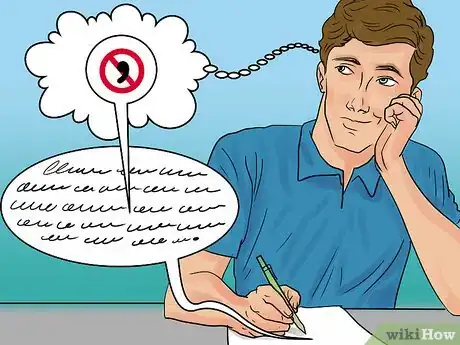

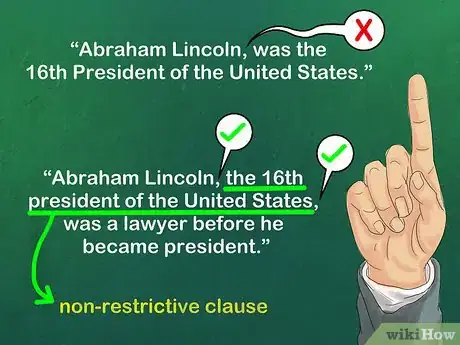
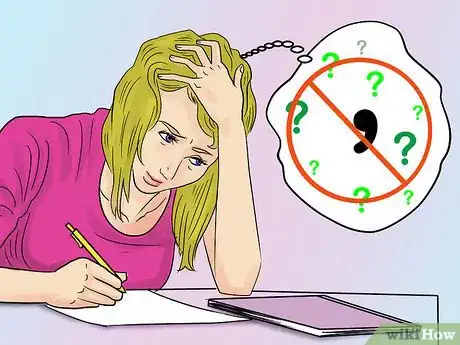
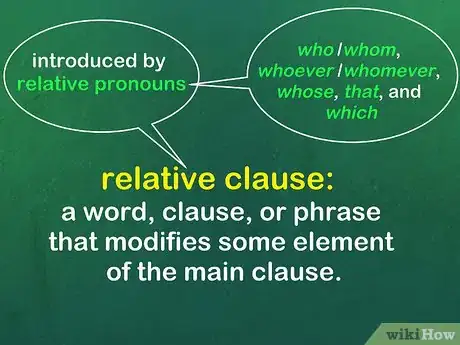
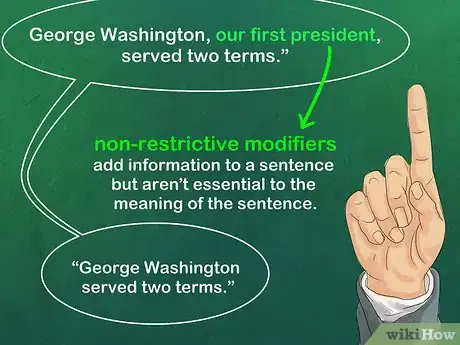


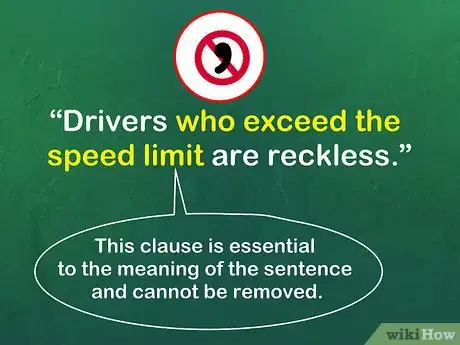

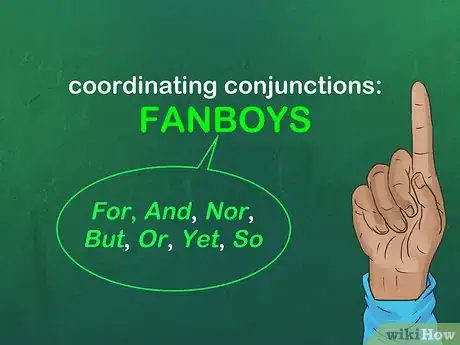

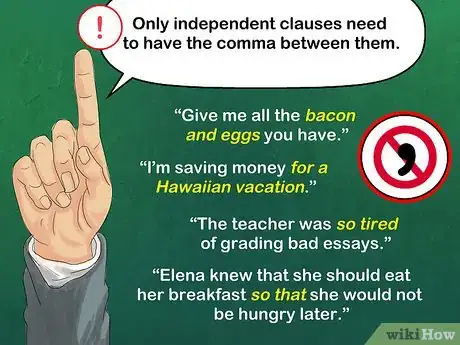
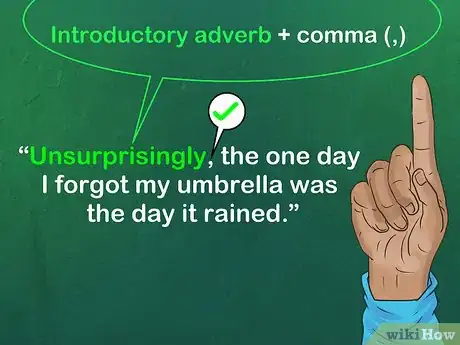
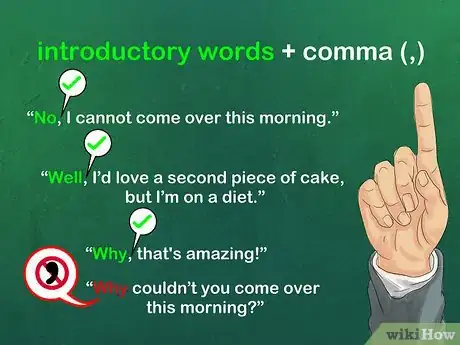
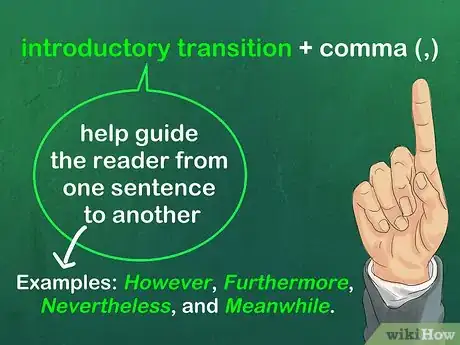
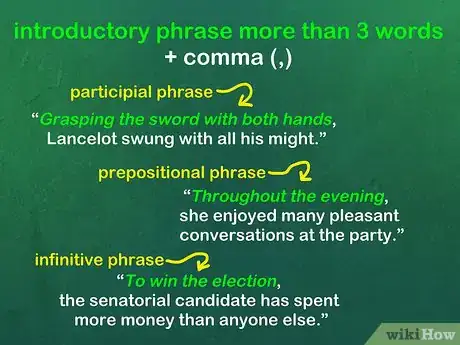
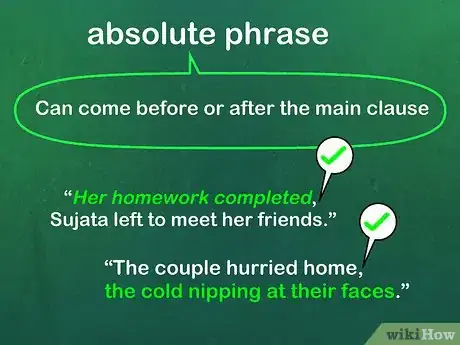
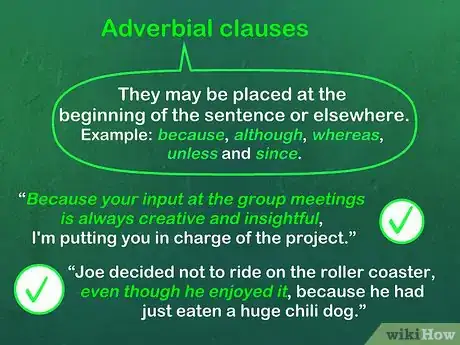

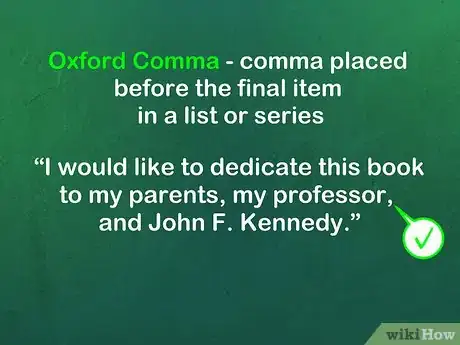
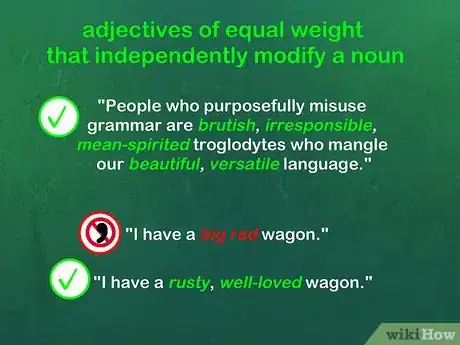

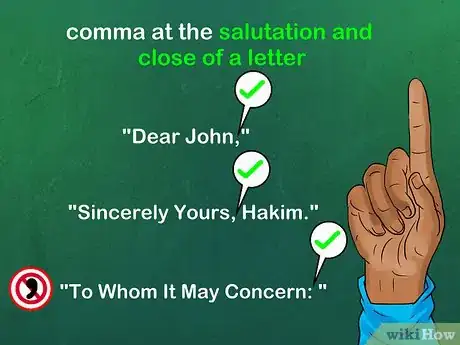

-Writing-Step-16.webp)


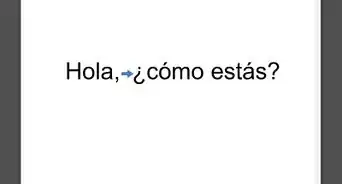


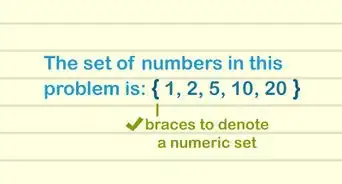


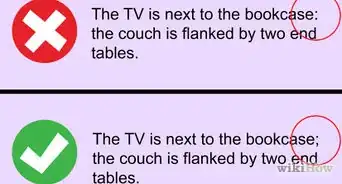
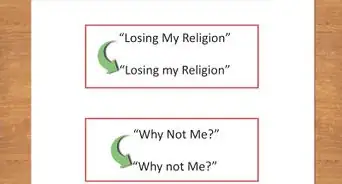


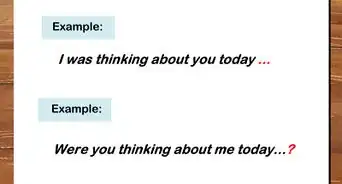








-Writing-Step-16.webp)
